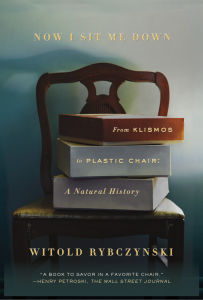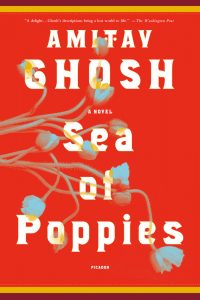Join NOMA staff and fellow book lovers as we read and discuss fiction and nonfiction books related to art, artists, art museums, NOMA’s collections and exhibitions.
The Book Club is an informal group. You do not have to attend every meeting and we understand if you have to leave a discussion or program early. The book club offers several types of programs: a book discussion group that meets once a month (no reading in December), curatorial programs, field trips, and Meet the Author receptions. Participants are expected to purchase their own copies of the selected titles.
RSVP for the meetings you wish to attend so we can prepare the meeting space. Remember to send your suggestions for “reads” throughout the year. They may appear in the following year’s schedule.
Please contact NOMA’s Learning and Engagement Department at education@noma.org or call 504.658.4128 for information about joining the NOMA Book Club.
JANUARY
An Artist of the Floating World by Kazuo Ishiguro
Vintage International, 1989, ISBN: 978-0679722663
This novel by Nobel Prize-winning British author Kazuo Ishiguro is set in post-World War II Japan and is narrated by Masuji Ono, an aging painter who reflects on his past. He laments that his once illustrious reputation has faltered since the collapse of Imperial Japan when he served as a police informant and adviser to the Committee of Unpatriotic Activities. Ono struggles with accepting the mistakes of his past. Other themes explored in the novel include arranged marriage, the changing roles of women, and the declining status of “elders” in Japan since 1945.
Friday, January 11, 12 – 1 p.m. | Curatorial Program with Lisa Rotondo-McCord, Deputy Director for Curatorial Affairs/Curator of Asian Art
Tuesday, January 15, 12 – 1 p.m. | Book Discussion Group
FEBRUARY
Double Vision: the Unerring Eye of Art World Avatars Dominique and John de Menil by William Middleton
Knopf, 2018, ISBN: 978-0375415432
This erudite and vigorously researched new biography of the the de Menils, chronicles the Houston-based cosmopolitan couple renowned for their philanthropic endeavors and a bequeathed art collection that forms the core of their namesake museum. Double Vision takes the full measure of the de Menil’s achievements, the well-known apotheosis of which is the Menil Collection, the masterpiece of a museum designed by Renzo Piano that opened in their adopted hometown in 1987.
TBD: The Book Club plans an overnight trip to Houston to visit the Menial Collection in February. If time permits, we will also visit the Rothko Chapel, Cy Twombly Gallery, the Contemporary Arts Museum/Houston Center for Photography, The Houston Museum of Fine Arts and other cultural institutions. More details to be announced.
Friday, February 21, 12 – 1 p.m. | Book Discussion Group
MARCH
Keith Sonnier: Until Today by Jeffrey Grove and Terrie Sultan
Prestel, 2018, ISBN: 978-3791357324
One of the first artists to use light, specifically neon, as a form of sculpture, Keith Sonnier changed our ideas of what sculpture is and could be. From his early pieces, such as Rat Tail Exercise and the Ba-O-Ba series, to his most recent luminous neon-based series, this book explores the progression and influence of Sonnier’s oeuvre. This beautiful monograph celebrates an artist who has never ceased experimenting—and never stopped astonishing his audience. NOMA will host a Sonnier retrospective from March 15 – June 2, 2019. —Google Books
Friday, March 15, 12 – 1 p.m. | Curatorial Program with Katie Pfohl, Curator of Modern and Contemporary Art
Tuesday, March 26, 12 – 1 p.m. | Book Discussion Group
APRIL
Portrait of a Phantom: The Story of Robert Johnson’s Lost Photograph by Zeke Schein
Pelican Publishing Company, 2017, ISBN: 978-1455622450
Late one night in 2005, Zeke Schein made an amazing discovery while searching for a vintage guitar on eBay: a grainy, battered photograph captioned “Old Snapshot Blues Guitar BB King????” Neither man looked like King, but one seemed to resemble the twentieth-century’s most mysterious musician, Robert Johnson. Would others see what he saw? With only three or four known images of the legendary blues guitarist in existence, this single picture was certainly an exceptional link to the past.
Thursday, April 11, 12 – 1 p.m. | Curatorial Program with Brian Piper, Andrew W. Mellon Foundation Fellow for Photography
Tuesday, April 23, 12 – 1 p.m. | Book Discussion Group
MAY
Leonardo Da Vinci by Walter Isaacson
Simon & Schuster, 2017, ISBN: 978-1501139154
To write this sweeping biography, Walter Isaacson immersed himself in 7,200 pages of notebooks by Leonardo da Vinci, which are now dispersed across the globe. Da Vinci’s interests were even more divergent than previously known, and Isaacson’s empathetic and deeply researched portrait illustrates how da Vinci willed himself to genius through endless curiosity and a creativity that sometimes crossed over into fantasy. Much like Isaacson’s previous subjects of Ben Franklin and Steve Jobs, da Vinci was a polymath—he was passionate about art, science, nature, and technology, and he never stopped questioning, practicing, or experimenting. Isaacson points out that this is a particular form of genius that can teach us how to live our own lives.
Wednesday, May 1, 12 – 1 p.m. | Curatorial Program with Tracy Kennan, Curator of Education, who will lead a lesson on color.
Thursday, May 16, 12 – 1 p.m. | Book Discussion Group
In conjunction with the selection for June, The Other Alcott: Novel: Thursday, May 30, 12 – 1 p.m. | Meet the Author Program with Anne Boyd Rioux, author of Meg, Jo, Beth, Amy: The Story of Little Women and Why It Still Matters
JUNE
The Other Alcott: A Novel by Elise Hooper
William Morrow Paperbacks, 2017, ISBN: 978-0062645333
A mix of history and imagination, this debut novel by Elise Hooper focuses on May Alcott, the model for Amy in Little Women, and the youngest sister of the book’s famous author, Louisa May Alcott … May longs to be taken seriously as an artist. But the press has sharply criticized her illustrations for her sister’s book. Louisa, meanwhile, sees May as a high-spirited dilettante, dedicated to having fun. Determined to prove Louisa wrong, May dodges a serious suitor and signs up for rigorous art classes, first in Boston, then in Europe, where she mingles with other artists (some real, like Mary Cassatt, others fictional or composites). Slowly, her skill and confidence grow … Hooper is especially good at depicting the complicated blend of devotion and jealousy so common among siblings. —Kirkus Review
Tuesday, June 11, 12 – 1 p.m. | Book Discussion Group
Friday, June 28, 11:30 a.m. – 2 p.m. | New Books Potluck Lunch
- Bring food and set up at 11:30 a.m.
- Discuss books and eat at 12 p.m.
JULY
Now I Sit Me Down: From Klismos to Plastic Chair, A Natural History by Witold Rybczynski
Farrar, Straus and Giroux, 2016, ISBN: 978-0374223212
In Now I Sit Me Down, distinguished architect and writer Witold Rybczynski chronicles the history of the chair from the folding stools of pharaonic Egypt to the ubiquitous stackable monobloc chairs of today. He tells the stories of the inventor of the bentwood chair, Michael Thonet, and of the creators of the first molded plywood chair, Charles and Ray Eames. He reveals the history of chairs to be a social history—of different ways of sitting, of changing manners and attitudes, and of varying tastes. The history of chairs is the history of who we are.
Tuesday, July 9, 12 – 1 p.m. | Curatorial Program with Mel Buchanan, RosaMary Curator of Decorative Arts and Design
Friday, July 26, 12 – 1 p.m. | Book Discussion Group
AUGUST
The Brilliant History of Color in Art by Victoria Finlay
J. Paul Getty Museum, 2014, ISBN: 978-1606064290
The Brilliant History of Color in Art by Victoria Finlay covers the development of art and color through the ages. Packed with fascinating detail and beautiful illustrations, this book combines colorful imagery with smartly-written text. Most of the publication’s 166 color illustrations represent works from the J. Paul Getty Museum collections. They exemplify the power of pictures to convey meaning, and Finlay’s informative text blends seamlessly with these high-quality reproductions. The matte-finished pages show them to good advantage. —Foreword Review
Thursday, August 8, 12 – 1 p.m. | Curatorial Program with Kelsey Brosnan, Curatorial Fellow for European Art
Thursday, August 22, 12 – 1 p.m. | Book Discussion Group
SEPTEMBER
de Kooning: An American Master by Mark Stevens and Annalyn Swan
Alfred A. Knopf, 2006, ISBN: 978-0375711169
Willem de Kooning is one of the most important artists of the twentieth century, a true “painter’s painter” whose protean work continues to inspire many artists. In the thirties and forties, along with Arshile Gorky and Jackson Pollock, he became a key figure in the revolutionary American movement of abstract expressionism. Of all the painters in that group, he worked the longest and was the most prolific, creating powerful, startling images well into the 1980s.
Friday, September 13, 12 – 1 p.m. | Curatorial Program with Allison Young, Andrew W. Mellon Foundation Fellow for Modern and Contemporary Art
Tuesday, September 24, 12 – 1 p.m. | Book Discussion Group
OCTOBER
The Last Painting of Sara de Vos: A Novel by Dominic Smith
Picador, 2017, ISBN: 978-1250118325
Amsterdam, 1631: Sara de Vos becomes the first woman to be admitted as a master painter to the city’s Guild of St. Luke. Though women do not paint landscapes (they are generally restricted to indoor subjects), a wintry outdoor scene haunts Sara: She cannot shake the image of a young girl from a nearby village, standing alone beside a silver birch at dusk, staring out at a group of skaters on the frozen river below. Defying the expectations of her time, she decides to paint it.
Tuesday, October 29, 12 – 1 p.m. | Book Discussion Group
NOVEMBER
Sea of Poppies by Amitav Ghosh
Picador, 2009, ISBN: 978-0312428594
This historical novel crammed almost to the bursting point with incidents and characters, but Amitay Ghosh deftly keeps everything under control. It’s 1838, and Britain is set on maintaining the opium trade between India and China as a buttress of its economic, political and cultural power. Ghosh orchestrates his polyphonic saga with a composer’s fine touch. He lays out multiple narrative lines, initially separate, that eventually conjoin on the Ibis, a schooner bound from Calcutta to China across the much-feared “Black Water.”…The density of settings, from rural India to teeming Calcutta to the Sudder Opium Factory, is historically convincing, and the author pays close attention to variations in speech, from the clipped formality of the educated class to a patois (“the kubber is that his cuzzanah is running out”) that definitely requires the glossary that Ghosh provides. —Kirkus Reviews
Friday, November 8, 12 – 1 p.m. | Curatorial Program with Lisa Rotondo-McCord, Deputy Director for Curatorial Affairs/Curator of Asian Art
Tuesday, November 19, 12 – 1 p.m. | Book Discussion Group










